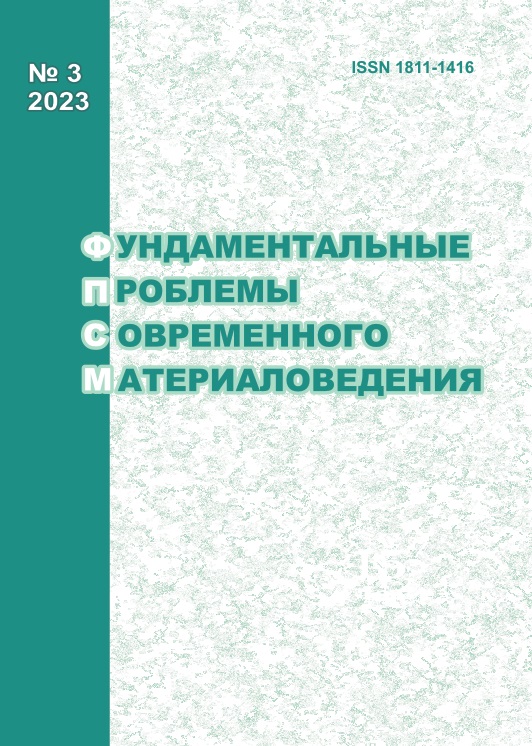ONE-STAGE DEPOSITION OF Ti–Cu COATINGS BY ELECTRIC SPARK TREATMENT OF Ti6Al4V TITANIUM ALLOY WITH AN ANODE OF COPPER AND TITANIUM GRANULES
10.25712/ASTU.1811-1416.2023.03.010
Keywords:
electrospark deposition, Ti6Al4V, Ti–Cu coating, wear, microhardness, wettability, coefficient of friction, oxidation resistanceAbstract
Currently, copper-titanium coatings have attracted a lot of attention from researchers in the field of surface modification of industrial and biomedical materials due to their excellent mechanical properties and biocompatibility. The preparation of the intermetallic Ti–Cu coating was carried out by electrospark deposition in an equimolar mixture of granules from electrical copper M0 and titanium alloy VT1-00. According to the energy dispersive analysis data, the average concentration of copper and titanium in the coating was 30 and 70 at. %, respectively. According to X-ray phase analysis, intermetallic compounds were found in the coating structure: CuTi3, CuTi, Cu4Ti3 due to which the microhardness of the coating reached 498.5 HV. The average coating thickness is 43.7 µm. The microstructure of the coating is represented by equiaxed grains with a diameter of 70-500 nm. The water contact angle for the Ti–Cu coating is 24 % greater than that of the original alloy. The Ti–Cu coating makes it possible to increase the oxidation resistance of Ti6Al4V titanium alloy by 1.3 times. The wear rate of the coating was 0.67×105, mm3/Nm. The use of Ti–Cu electrospark coatings makes it possible to decrease the wear rate of the Ti6Al4V alloy surface by 11 times. A combination of oxidative and abrasive wear was the wear mechanism of the Ti–Cu coating, while adhesive wear was more characteristic for the Ti6Al4V alloy.











 Journal «Fundamental’nye problemy sovremennogo materialovedenia / Basic Problems of Material Science»
Journal «Fundamental’nye problemy sovremennogo materialovedenia / Basic Problems of Material Science» This work is licensed under a
This work is licensed under a 
